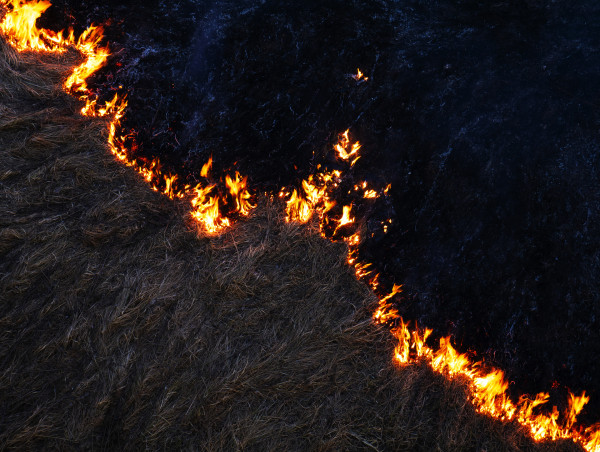Earl Carr, Jr., president of Gulf 52 in Hammond, Louisiana, emphasized the importance of integrating prescribed burning into broader community risk reduction strategies. Carr, who has worked with rural and urban interface regions across the state, noted that "Unmanaged vegetation buildup poses a persistent and preventable threat to infrastructure, ecosystems, and public safety."
What Is Prescribed Burning?
Prescribed burning, also called controlled burning, involves the intentional ignition of specific land areas under carefully monitored weather conditions and supervision. These burns are planned to reduce accumulated fuels such as dead leaves, pine straw, brush, and undergrowth that, if left unmanaged, can lead to high-intensity wildfires.
Controlled burns are not spontaneous fire events. They are carried out under written burn plans that consider wind direction, humidity, temperature, fuel moisture, and containment boundaries. Firebreaks and contingency resources are also implemented to prevent unintended spread.
When applied properly, prescribed fire lowers fuel loads, recycles nutrients into the soil, supports native plant regeneration, and disrupts invasive species. It can also improve wildlife habitats and restore fire-adapted ecosystems that have evolved to benefit from periodic low-intensity fire.
The Link Between Fuel Load and Fire Intensity
Overgrown vegetation and accumulated organic debris create dense fuel beds that allow wildfires to burn hotter, spread faster, and become more difficult to control. In forest-adjacent neighborhoods or near industrial sites, these fuels can act as ladders that carry fire into tree canopies or toward structures.
Prescribed burns reduce these risks by thinning ground-level vegetation and interrupting the continuity of fuels. By creating mosaic patterns of burned and unburned areas, fire managers can control how future wildfires behave—slowing their spread, reducing their intensity, and improving the odds of successful suppression efforts.
Urban Interface and Changing Land Use
As Louisiana communities expand into previously undeveloped areas, the wildland-urban interface continues to grow. This interface creates complex challenges where residential developments border undeveloped or partially managed land. Properties in these zones often face higher exposure to fire-related threats, especially during drought conditions or high wind events.
Prescribed fire serves as a preemptive solution in these environments. Burns conducted on buffer lands or undeveloped acreage near communities can dramatically reduce the potential for embers to travel or flames to jump into residential zones. When paired with mechanical thinning or mowing, prescribed burning adds another layer of fire defense.
Environmental and Agricultural Benefits
Beyond risk reduction, prescribed burning supports ecological functions that benefit agriculture and wildlife. In pine-dominated forests, for instance, fire reduces competition from hardwood saplings and allows sunlight to reach the forest floor, which in turn promotes the growth of grasses and herbaceous plants beneficial to grazing and ground-nesting species.
For agricultural landowners, prescribed burning can also be used to manage invasive plant species, stimulate forage regrowth, and prepare fields for planting. In coastal marsh areas, it can maintain open water habitat and improve access for wildlife and fisheries management.
Controlled burns also assist in managing pests and diseases by eliminating decaying material that harbors insects or pathogens harmful to trees and crops.
Prescribed Fire Regulations and Oversight
In Louisiana, prescribed burning is regulated through the Louisiana Department of Agriculture and Forestry (LDAF) and conducted by certified burn managers. These managers undergo training in fire behavior, safety protocols, and environmental regulations. They are also required to follow state-approved burn plans and notify local agencies prior to any operation.
Legal protections are provided for certified prescribed burns conducted in accordance with state law, helping ensure that landowners and managers can use fire as a tool without undue liability when proper procedures are followed.
Public Perception and Education
Despite its benefits, prescribed burning often faces public skepticism. Smoke concerns, perceived danger, and visual disruption of landscapes can cause resistance among nearby residents. Community education remains essential for reinforcing the purpose, safety, and outcomes of prescribed burns.
Notification protocols, signage, and public outreach campaigns contribute to broader acceptance and understanding. When communities are informed ahead of time, support for burning operations tends to increase, especially when tied to local risk reduction goals.
Future Outlook for Louisiana
With climate variability and land development patterns altering traditional fire behavior, prescribed burning will continue to be a central strategy in maintaining landscape resilience. Integrating fire into land management—not as a destructive force, but as a restoration tool—can reduce disaster response costs, limit property loss, and support ecological balance.
According to Earl Carr, Jr., ongoing investment in training, public awareness, and inter-agency coordination will determine how effectively prescribed fire is used to shape safer, healthier landscapes across Louisiana.
Morgan Thomas
Rhino Digital, LLC
+1 504-875-5036
email us here
Visit us on social media:
Facebook
Legal Disclaimer:
EIN Presswire provides this news content "as is" without warranty of any kind. We do not accept any responsibility or liability for the accuracy, content, images, videos, licenses, completeness, legality, or reliability of the information contained in this article. If you have any complaints or copyright issues related to this article, kindly contact the author above.
![]()






